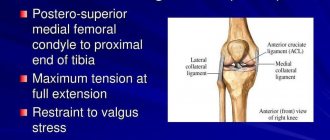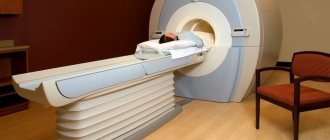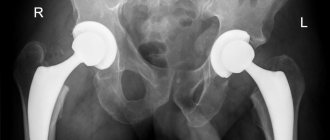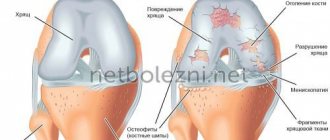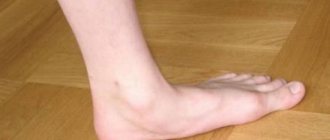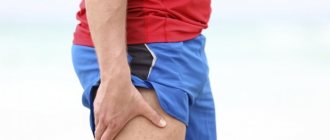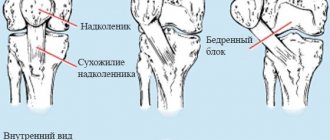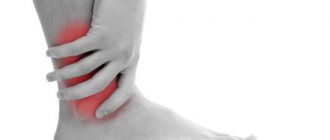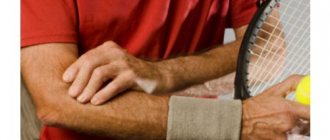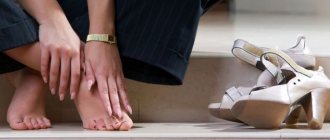Due to its complex structure and function, the knee joint is very susceptible to injury, which can cause pain. Many people, especially the elderly and athletes, often complain of this disease. Overuse, bruises, sprains, sprains, strains, and tears are the most common causes of knee pain. What other reasons can cause knee pain? Do I need to visit a doctor? How to care for your knees? What should I do to prevent them from getting sick?
Knee structure
The knee joint is the largest joint in the human body and is most often affected by various types of injuries. Thanks to it, you can straighten and bend your leg, as well as perform rotational movements.
The knee is located between the femur and the tibia, has a width of 11-22 cm. The design of the knee is distinguished:
- meniscus,
- ligaments,
- knee cap.
Meniscus
The meniscus consists of two rigid plates with flexible cartilage.
There are lateral and medial meniscus. By adapting to the articular surface, they can move when the knee bends backward by 12 mm. These properties allow them to act as shock absorbers during jumps and distribute body weight evenly.
If your meniscus is damaged, you may experience the following symptoms:
- difficulty flexing and extending the joint;
- acute pain in the knee;
- difficulty moving;
- edema;
- a feeling of stiffness and an audible clicking sound.
Meniscus damage can be caused by:
- degenerative changes;
- cyst inside the joint;
- severe flexion and torsion injuries;
- disruption of the meniscus structure,
- overload.
Ligaments
The knee is strengthened by external collateral ligaments and joint capsules, as well as internal ligaments: the anterior and posterior cruciate ligaments. The first prevents the tibia from moving forward, the second prevents the tibia from sliding backward.
The cruciate ligaments protect the knee joint from wearing out too quickly and support a smooth gait.
Damage to the knee ligaments causes instability of the knee, that is, excessive mobility in relation to the physiological state.
The most common injury is the anterior cruciate ligament, which prevents the tibia from moving forward in relation to the femur.
Knee ligament injuries are most often indicated by severe knee injury, a feeling of dislocation, and a hematoma in the joint.
Knee cap
The kneecap is a flat bone located in front of the knee. Together with the femur, it forms the patellofemoral joint. Under normal conditions, the kneecap moves in the groove of the knee joint.
When it slips out of the groove, pain and problems with walking occur. The most common diseases are chronodromalacia patella and lateral support syndrome of the patella.
Chondromalacia is a condition of the cartilage surrounding the kneecap. The cause of this condition is the improper angle of movement of the kneecap by the quadriceps muscles, which causes the kneecap to rub against the bone instead of sliding.
Injury to the medial collateral ligament
The internal collateral ligament is not actually located inside the joint, but on its inner side, that is, closer to the other leg. With injuries and unsuccessful movements, you can observe stretching of this ligament, tears and micro-tears. Complete avulsions of the internal ligament occur rarely, usually with severe concomitant leg injuries.
Diagnosis of sprains in this area is based on clinical examination and symptoms. A nagging, sharp pain is localized on the side of the knee joint and intensifies when the lower leg is moved to the side, sometimes when flexed. In order for the ligament to heal completely, it needs rest and wearing an elastic restraint (knee brace).
Causes of knee pain
Knee pain can be caused by many reasons. The pain can be painful after intense running, climbing, heavy exercise and sprain injuries. Knee pain also occurs due to bacterial inflammation, metabolic disorders such as gout, and chronic diseases such as degenerative joint disease.
However, knee pain most often affects athletes who put weight on their knee joints, especially so-called "chair athletes" who do not engage in any activity and suddenly decide to ski or run. Knee pain is characterized by limited joint mobility and swelling of the knees, which often occurs after intense exercise.
Why do knees hurt at a young age?
The most common causes of knee pain, especially in young people, are physical activity and joint strain. If it is not caused by direct injury, it is most likely due to training errors:
- Incorrect running technique
- Poorly fitting shoes (not designed for running or that do not take into account foot defects such as flat feet),
- Running on a surface that is too hard (such as asphalt or cobblestones),
- Lack of proper warm-up
- Exercise intensity is too high.
Overuse of the knee can also occur as a result of frequent and prolonged standing and obesity.
Knee pain treatment
Before starting treatment for knee pain, you should consult a specialist. Depending on the extent of the injury and symptoms, conservative or surgical treatment is performed.
Conservative treatment of knee pain contains an algorithm of the following actions:
- First and foremost, the limb must be protected from further injury. The knee is given rigidity and the load is relieved with the help of crutches.
- It is necessary to avoid putting stress on the limb and avoid activities that cause pain, which promotes tissue healing.
- The temperature of the tissues is lowered in order to minimize the risk of edema or reduce the existing one. In addition, it has an analgesic effect. Cooling is carried out in the first 48-72 hours after injury for 10-15 minutes, approximately every 2 hours.
- It is necessary to apply moderate pressure in the form of a bandage of the limb. This prevents swelling.
- It is advisable to place the limb on high pillows in a supine position. This will help prevent the tumor from spreading to the damaged area.
- Using ointments and tablets prescribed by a professional doctor will help the pain area heal faster.
Surgical treatment for knee pain is considered when conservative treatment has failed and surgery or reconstruction of the damaged structure of the knee is necessary, such as cruciate ligament reconstruction, meniscectomy, repair of a torn tendon or bone fracture.
Knee bruises
This type of injury occurs more often in people leading an active lifestyle, but no one is immune from it. Depending on the direction of the blow, its strength and the object, pain from a bruise can cover the entire joint or its sides. Anterior impacts to the kneecap cause pain from the front; lateral impacts cause pain on the inside or outside of the knee.
If the bruise is not severe, to treat it, it is enough to apply a cold compress (for basic rules, see this article). With bruises of significant impact force, effusion may form in the joint, a hematoma may appear, and mobility may be limited. If this occurs, it is necessary to examine the joint using X-rays and ultrasound, and then contact an osteopath. For patients with such injuries, we recommend starting osteopathic treatment 3-5 days after the injury, after a period of complete rest and cold.
Which doctor should I consult for knee pain?
First, it is best to visit your general practitioner, who will conduct an initial examination of the injured knee, based on which it will be possible to diagnose its possible cause. The doctor will examine the sore spot and, if possible, prescribe appropriate pharmacotherapy (most often these will be anti-inflammatory and painkillers) or rehabilitation. If the problem is more complex, your GP will refer you to an orthopedist or rheumatologist for a more in-depth diagnosis.
If you suspect that your knee may have been damaged as a result of an injury, you should not delay visiting your doctor. Quickly identifying the cause of your pain will not only help you combat it, but most importantly, it will save you from serious consequences such as joint damage and disability.
Treat until it hurts
To prevent your knees from hurting when walking for a long time, you need to monitor your weight, protect yourself from injuries and promptly consult a doctor at the first sign of pain.
To avoid microtraumas, for jogging you need to choose a springy surface (not asphalt, but special treadmills or dirt), and select the right shoes. Timely correction of posture and other orthopedic problems will help avoid overloading the knees and keep them healthy.
Monitoring your general health will allow you to detect gout, diabetes, rheumatism in time - diseases that negatively affect the health of the joints, but if treatment is started on time, the health consequences will be minimal.
Cure for knee pain
If you have pain in your knees, it is best to consult a doctor who will prescribe you the necessary pharmacological medications. Self-medication may not give you any results, and more often it can only worsen the problem.
To improve the motor system and relieve pain, it is recommended to use nutritional supplements for joints (with glucosamine, collagen, hyaluronic acid, chondroitin), which support the production of synovial fluid necessary for the proper functioning of the joints. To temporarily relieve pain, you can use painkillers or topical gels (with paracetamol, ibuprofen, diclofenac). In addition, patches and warming ointments applied to the sore area relieve pain in bones and joints, allowing effective movement.
Knee pain when bending
Knee pain when bending can be caused by overuse during daily life or sports. In this case, rest and peace to the damaged area helps.
Many patients with knee pain are diagnosed with various conditions that affect knee dysfunction. Such diseases include:
- Degenerative changes. A degenerative disease affecting the knee joint is gonarthrosis.
- Chondromalacia patella - This condition causes the articular cartilage that covers the kneecap to soften.
- Baker's popliteal cyst - with this disease, fluid accumulates in the popliteal fossa. The cyst is treated surgically.
- Jumper's knee is an occupational disease that most often affects very active people. Occurs as a result of overload of the upper part of the kneecap.
- Runner's knee is an injury to the joint between the kneecap and the thighbone, commonly affecting people who exercise.
- Ankylosing spondylitis
- Rheumatoid arthritis
- Bacterial infections
- Lyme disease is a disease that in many cases affects the joints, including the knees.
Bring back the flying gait
If your knee hurts severely and it hurts to walk, a doctor should answer the question of how to treat it. If the pain began after an injury, you need to contact a traumatologist, in other cases - a surgeon. Diagnosis must be made quickly and treatment must be started in a timely manner. If you delay it, then acute arthritis is more likely to turn into chronic, which can no longer be completely cured, since the joint tissues will already be destroyed and arthrosis will develop - deformation of the joint tissues.
When the knee hurts when walking, treatment may include both rest and dosed exercise or, more often, physical therapy. It all depends on the diagnosis.
Treatment of the spine and joints includes nonsteroidal anti-inflammatory drugs (NSAIDs), physical therapy, and exercise therapy. NSAIDs simultaneously relieve pain and reduce inflammation. Physiotherapy provides ample opportunities for treating joints:
- magnetic therapy - improves blood flow in the joint area and helps with all diseases of the knee joints;
- electrophoresis is a way to deliver medicine to the joint area in an atraumatic way, avoiding the negative effect of the medicine on the body;
- osteopathic methods and manual therapy help restore the correct position of the body and normalize the load on the joints of the legs.
Therapeutic gymnastics, including the use of suspended unloading structures, is used in rehabilitation when the acute period is stopped and there is no severe pain. Rehabilitation is necessary to restore mobility to the legs and consolidate the effect of therapy. For some joint diseases, sanatorium treatment is indicated, which is intensive physiotherapy.
Knee pain when walking
Pain in the knees when walking is characterized by a characteristic crunching and cracking sound. It tends to get worse when running, playing sports, climbing stairs or walking. Painful symptoms also appear when sitting in one place for a long time, for example, when working for many hours at a computer or while driving a car.
Internal knee pain when walking is often caused by damage to the kneecap, meniscus (the elastic component of the knee), or ligaments. To avoid the development of physiopathological processes, treatment must be started as early as possible, otherwise there is a risk of surgical intervention.
Knee pain when going down stairs can cause what is called synovial plica syndrome, which occurs in people who are very physically active and constantly bend and straighten their knees. Sharp pain in the outside of the knee when walking is usually closely associated with lateral damage to the meniscus, which is more mobile and therefore more susceptible to injury. Older people mostly complain of pain under the knee when walking. This is because the level of cells that form the vascularized meniscus decreases with age.
Knee pain on the inside
The cause of knee pain can be a pathology of the knee joint, for example, as a result of injury or osteoarthritis. Sometimes knee pain can be the result of a rheumatological condition, such as gout, or other diseases, such as Lyme disease. A common cause of knee pain is overuse due to excess weight or sports. Pain in the knee or calf area may indicate vascular disease. In addition to the presence of pain, accompanying symptoms are also important. Therefore, it is worth visiting a therapist who, after meeting the patient, will order possible diagnostic tests and refer, for example, to an orthopedist and traumatologist or rheumatologist.
Diagnostics
Orthopedic doctors diagnose and treat knee pain. According to indications, a consultation with a neurologist, vascular surgeon, rheumatologist and other specialists may be prescribed. When identifying a psychosomatic disorder, work with a psychologist is required. The first stage of diagnosis is questioning the patient, carefully collecting complaints and anamnesis. Next, the doctor examines the affected area, makes a presumptive diagnosis and performs laboratory and instrumental studies. It includes:
- radiography of the joint in several projections - allows you to detect injuries, degenerative-dystrophic processes of the joint;
- x-ray of the lumbar spine or hip joints (if the pain is caused by damage to this area);
- Ultrasound of the knee joint is an effective method for inflammatory and degenerative processes, lesions of soft tissues;
- MRI – allows you to identify changes that are not visible on an x-ray;
- densitometry - an x-ray method for diagnosing osteoporosis;
- general and biochemical blood tests - relevant for inflammatory, metabolic and autoimmune diseases
The sooner the patient seeks help from specialists, the easier it will be to establish a diagnosis and the more effective the treatment will be.
Side knee pain
Lateral knee pain is one of the most common pain complaints after injury. It may happen suddenly or develop gradually. These types of symptoms are quite common in runners and people who participate in sports that require activity, such as twisting or sharply turning a limb. Pain on the side of the knee can cause limited mobility and other symptoms such as swelling or jerking in the joints (knee twitching, popping).
The most common symptoms reported by patients are tingling on the side of the knee, a burning sensation, knee pain after running, walking or at rest. As a rule, imaging allows you to very accurately determine the extent of damage to the structures of this joint. They use X-rays, ultrasound of the knee joint and the most accurate magnetic resonance imaging. Sometimes a diagnostic procedure called exploratory arthroscopy is necessary. This is the case when the clinical picture is unclear and there is insufficient information from studies conducted to date.
External knee pain
There is no single cause of pain, but there are several reasons why you may have knee pain. More common:
- Athletes: runners, cyclists, martial artists, gymnasts.
- After an injury that pushes the knee outward (away from the other leg).
- In those who do exercises that involve twisting or rotating the knees
- In people who tend to be bent at the knees or bow-legged, putting stress on the outer knee
Also, pain in the knee on the outside can be caused by injury. Only a professional doctor can make a diagnosis.
Exercise therapy for meniscal injuries
As part of the recovery from a meniscus injury, you can engage in physical therapy, provided that the doctor considers exercise therapy acceptable. A moderate load allows you to quickly get your knee in order, increase its mobility and prevent relapses.
To begin, take a lying position on your back, stretch your limbs, place your arms along your body. The back of the knee is pressed tightly to the floor, the toes are pulled towards you. Pull your socks on for a few seconds, then relax your legs. Repeat the stretch 10–20 times.
The next exercise is also performed while lying on your back. Raise your straight legs brought together at an angle of 45º from the floor, slowly spread your legs to the sides, pulling your toes towards you, hold in this position for several seconds. Close your legs, lower them and relax. Repeat the exercise 6-10 times.
For the next exercise, stand up and straighten up. Raise your affected leg as if you were about to take a step, then gently place your heel on the ground with your toes pointed toward you. Straighten your leg, tighten your thigh muscles. Hold your leg in this position for a few seconds, then relax it. Repeat 6-10 times.
The next exercise is performed with a chair. Turn its back towards you, grab it with both hands. Start moving your toes and heels alternately, without lifting them off the floor and leaning on your back so as not to lose your balance. For this task - also 6-10 repetitions.
The initial position for the final exercise is lying on your stomach with your arms extended in front of you. Bend the knee of the affected leg as much as possible, trying to reach the heel towards the buttocks, hold the limb in this position for a few seconds. Slowly lower your leg and relax. 6–10 repetitions.
If you prefer to watch exercises with an example of how to do them correctly, watch the following video:
And remember: if you experience any pain, stop training immediately! Exercise therapy for meniscus injuries is allowed only with the permission of a doctor, but if the doctor allows it, try to make the exercises regular.
